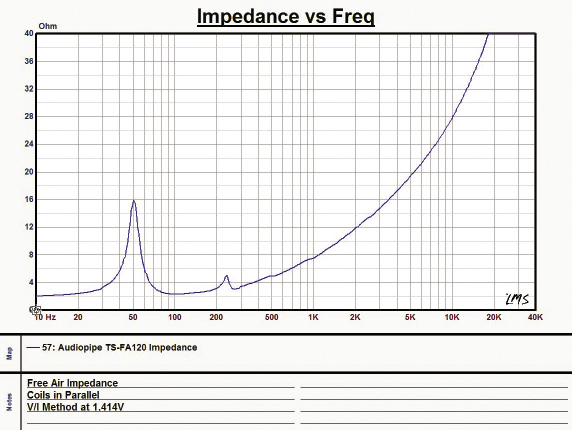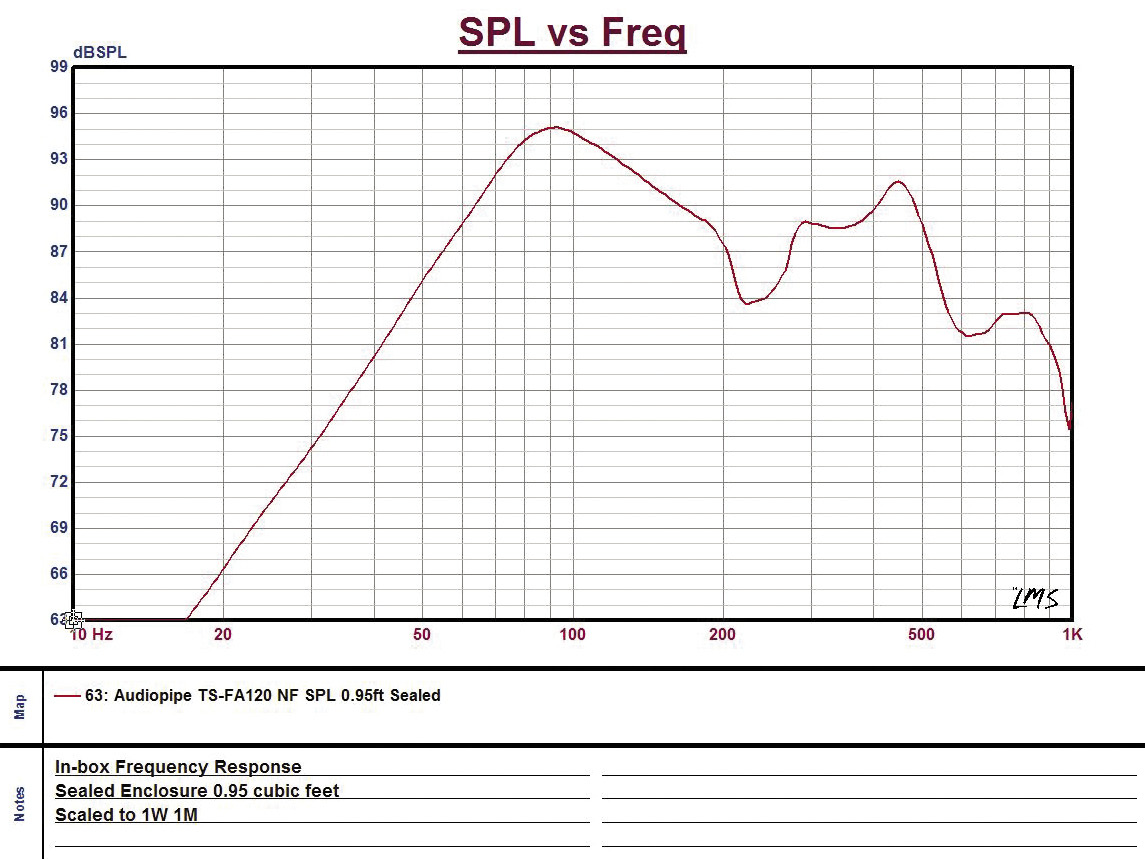If your ride is limited for space to install subwoofer enclosure and you have a similar restriction when it comes to your bank account, there is still hope. Shallow woofers work well in very limited depth locations - and we’re looking at one that also works with shallow pockets.
Meet the TA-FS120 from Audiopipe. This is a value-priced, dual voice coil, twelve-inch shallow-mount woofer requiring less than three inches of mounting depth. With a depth of only 2.875 inches and a price tag well under a hundred bucks, the TA-FS120 is one of the lowest priced shallow-mount woofers available.
Rated at 250 watts of continuous power, the woofer is nicely made with a cast aluminum basket finished in a high gloss black powdercoat. The dual four-layer, four-ohms voice coils allow two or eight-ohm configurations, while the high gloss piano black finish on the injection-molded poly cone provides a great background for the diamond cut style Audiopipe badge.
From a technical perspective, the woofer uses a large diameter, slim-profile ferrite magnet to drive the four-layer, 1.5-inch voice coils. A single, linear type Nomex/cotton spider provides control and compliance underneath the cone, with a butyl rubber surround for cone control and compliance around the perimeter of the cone. Speaker connections are handled by nickel-plated, spring-loaded terminals and accept 10-gauge cable. Tinsel leads are stitched to the spider to eliminate lead slap under high excursion conditions.
A rubber gasket trims out the mounting flange, and helps provide an air tight seal to hard surfaces.
Listening
According to the manual, the TA-FS120 is designed for sealed enclosures ranging from 0.8 to 1.8 cubic feet, or a two cubic-foot vented enclosure. The major reason most people buy a shallow woofer is because they have very little room for an enclosure, so I decided to do my listening in a sealed enclosure on the smaller side of the recommended range. Mine measured 0.9 cubic feet after deducting the displacement of the woofer.
The Audiopipe shallow woofer sounded better than expected for a woofer on the economical end of the scale, with lots of output in the 50 to 150 Hz range. Bass output was relatively well-controlled and musical. After some experimenting, I found that using a steeper slope on my low pass filter improved the sound quality of the system. I ended up using a crossover frequency of 90 Hz, with a -24 dB per octave slope. If you stay within the woofer’s rated power handling of 250 watts, you will have no problems with power handling. But if you overdrive this woofer, it will let you know. Extremely low frequencies were evident, but at lower output levels. This will be less of a problem in your car due to the vehicles transfer function that my large listening room lacks. A larger enclosure would undoubtedly help too, but the whole reason for needing a shallow woofer in the first place is usually because you don’t have enough space.
On The Bench
After the break-in and all the listening was done, I allowed the woofer to normalize overnight and moved into the lab for some precision measurements. With the dual coils wired in parallel with a DC resistance of 1.9 ohms, I measured the drivers Thiele-Small parameters. My results were quite a bit different than what was stated from Audiopipe, although they do not indicate how the woofer was measured to achieve their numbers. This can lead to inaccurate data being used to design your enclosure, so it pays to verify all of the data before using it to engineer an enclosure.
My data agreed with the manual (that the woofer is able to work in sealed or vented boxes), but indicates that the best results would be in significantly larger-than-recommended sealed enclosures. While examining the free-air impedance curve, I also noticed a second resonant spike around 230 Hz that seems to be a mechanically induced harmonic. The nearfield response curve also shows this aberration as a drop in the woofers output due to the impedance rise, but because almost everyone uses a low pass filter well above this frequency, it’s not going to be an issue in normal use.
Thiele-Small Parameters
TA-FS120
Coils in Parallel
Revc= 1.910 ohms
Fo= 49.879 Hz
Sd= 0.049 M²
Vas= 1.005 cu-ft
Cms= 0.082 mm/N
Mmd= 116.755 g
Mms= 123.031 g
BL= 8.951 T•M
Qms= 6.156
Qes= 0.919
Qts= 0.800
Levc= 0.386 mH
No= 0.371 %
SPLo= 87.716 dB
EBP= 54.27
Quick Tech Specs
Power Handling 250 Watts RMS
Frequency Range 25 - 500 Hz
Sensitivity 87.7 dB/SPL @ 1.0 W (1.414 V @ 2 ohms)
Nominal Impedance (2) 4 ohms coils
Conclusion
If you want to put some bass in your ride and need a very affordable, shallow woofer to do it, the Audiopipe TA-FS120 should be on your list of products to consider. With higher-end features and excellent value, you may find it offers among the best bang for the buck.
Related Articles
 BBS Launches Two-Piece CH-R II Unlimited Wheel in 20–22 Inches
BBS Launches Two-Piece CH-R II Unlimited Wheel in 20–22 Inches
 KW Releases V3s Compatible with BMW Air Suspension and EVs
KW Releases V3s Compatible with BMW Air Suspension and EVs
 Lexus unveils all-electric LFA Concept
Lexus unveils all-electric LFA Concept
 Toyota unwraps GR GT supercar and GR GT3 racer
Toyota unwraps GR GT supercar and GR GT3 racer
 Genesis reveals first Magma production car and supercar concept
Genesis reveals first Magma production car and supercar concept
 Chopping Block: BMW Z4
Chopping Block: BMW Z4







